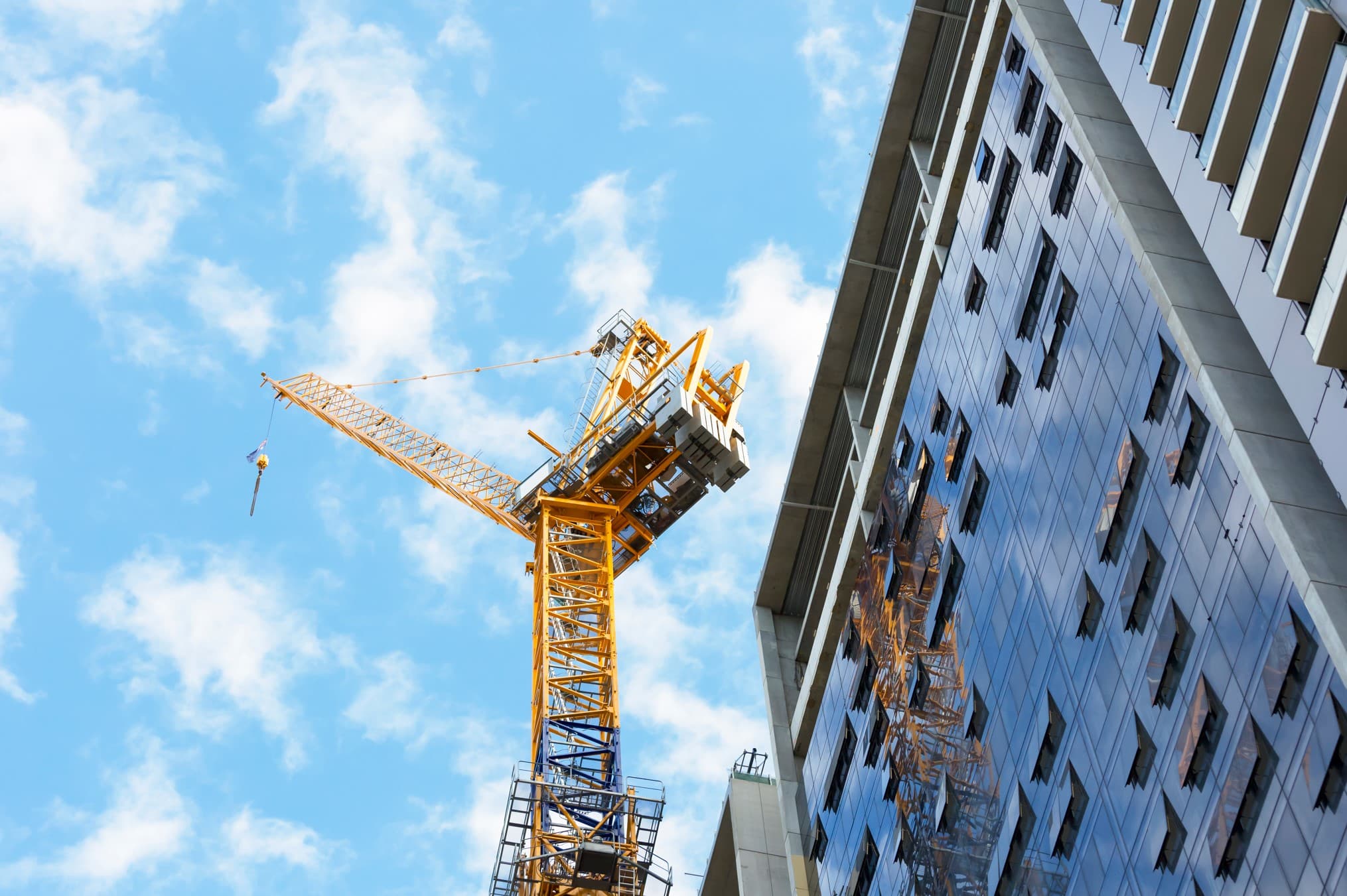Raising the roof on sustainable development goals
With the deadline for Australia’s SDGs fast approaching, a shift in thinking that moves away from ESG compliance and towards a data-driven ‘impact mindset’ is necessary.

Key highlights
Just 17% of the Sustainable Development Goals are on track, with a staggering annual investment gap of up to US$5 trillion jeopardising our progress
As we near our 2030 deadline, we must ramp up investment, which in Australia starts and ends with affordable housing
We need a shift in thinking that moves away from ESG compliance and towards a data-driven ‘impact mindset’
Cashing in our commitment to the SDGs
When the world’s nations signed up to the United Nations’ 17 Sustainable Development Goals (SDGs) in 2015 we agreed to a blueprint for a more resilient world that protects the planet and shares prosperity.
Since then, a pandemic and intensifying climate change, simmering geopolitical tensions, and escalating conflicts have hindered progress. According to the June 2024 Sustainable Development Goals Report 2024, nearly half of the targets show minimal or moderate progress, and more than a third have stalled or are regressing.
Among the urgent priorities is an investment gap of up to US$5 trillion each year, as reported by the UN.
Local solutions for global goals
Speaking at UN’s Summit of the Future in September 2024, Canadian Prime Minister Justin Trudeau, one of 17 SDG Advocates, emphasised the critical importance of “multipliers”.
“One of the things that we need to really look at is which of the Goals are most connected to so many others,” Prime Minister Trudeau said. In Australia, the search for multipliers leads us to affordable housing, an urgent problem that has unfolded in our own backyards.
Affordable, sustainable housing directly supports sustainable cities and communities (SDG 11). But it also reduces poverty (SDG 1), bolsters well-being (SDG 3), creates decent work and economic growth (SDG 8), addresses climate change (SDG 13), promotes peaceful and inclusive societies (SDG 16), and reduces inequalities (SDG 18).
To maximise this SDG multiplier, we must find innovative ways to direct capital flows. Knight Frank's Active Capital map, which offers a powerful interactive picture of cross-border capital flows, estimates that around US$10.9 billion of capital is looking for a home in Australia. Of that, more than $2 billion of capital is ready to be deployed to Australian residential projects.
Figure 1 - Inbound capital flows to Australian real estate, September 2024 (Source: Knight Frank, 2024)

Tipping the feasibility scales with the SDGs
Billions of dollars of ‘dry powder’ is ready to invest in Australian residential projects that can deliver multiple SDG benefits. So, what’s the hold-up?
There has been no shortage of commentary on ways that the property industry in Australia can address housing affordability and the shortage in supply. The issue of sluggish productivity and spiraling costs of residential projects are well documented and unlikely to be resolved without the government engaging as an active participant.
We all know the challenge is complex. But I wonder: Can the SDGs tip the feasibility scales back in favour of residential developments? Altus Group’s latest Commercial Real Estate Industry Conditions & Sentiment Survey suggests a shift in mindset is required first. While our recent survey took the pulse of property investors in North America, it has useful insights for Australia as many of the institutional owners are the same or share similar drivers.
Figure 2 - How do ESG considerations affect investment or credit decisions?

When we asked investors how ESG (Environmental, Social, and Governance) influences their investment decisions, just 21% of smaller investors said it played a significant role. A notable 18% said they didn’t consider ESG at all in their capital decisions.
While ESG is gaining traction among mid-sized investors – and not one said they ignore ESG altogether – half see ESG as primarily a reporting requirement. This suggests that compliance with external pressures is the primary ESG driver among mid-sized investors.
Large investors take a varied approach. Some integrate ESG into their decision-making, while others – a surprising 18% - don’t consider it at all. The largest investors, meanwhile, are less aspirational than we might expect. These investors tend to balance ESG considerations with other factors rather than making it the sole focus. Overall, the larger the investment portfolio, the more likely ESG considerations are applied in a meaningful way, although even large investors take a pragmatic approach to ESG.
Why does this matter? Because a sizeable proportion of investors responsible for billions of dollars of capital see ESG as a reporting requirement, rather than a tool to accelerate their social impact or accelerate the SDGs.
ESG and impact investment unpacked
While ESG and impact investing are related concepts that often overlap in practice, there are distinct differences that are important to understand in the context of the SDGs.
ESG is a set of criteria that investors use to evaluate a company’s operations and practices. By applying an environmental, social, and governance lens, investors can assess how well a company manages sustainability risks and opportunities.
The E in ESG is fairly straightforward to measure – think kilowatt hours of energy consumed, kilograms of carbon saved or tonnes of waste avoided. The same goes for the G. How transparent and accountable is a company’s leadership structure, board, and decision-making? The S is more complex, covering everything from how a company treats its employees and engages with its supply chain, to the social value it creates in communities.
Overall, ESG is about managing risks and ensuring that companies are responsibly governed, environmentally conscious, and socially aware. This can lead to better practices, but it is more likely to avoid harm than actively drive change.
Impact investing, on the other hand, seeks to directly contribute to solving global challenges like those outlined in the SDGs. These investments go beyond simply supporting sustainable companies – it proactively invests in solutions that generate measurable outcomes. Unlike 'not-for-profit' initiatives, impact investment strategies strike a balance between doing good and deriving profit, proving that it is possible to drive meaningful change while achieving competitive financial gains.
Closing data gaps for impact
To progress the SDGs, property companies must embrace impact metrics that are directly tied to SDG outcomes, not just ESG scores. But to do this, they need access to robust data.
Research published recently in Nature magazine has found data sources relevant to the SDGs are “riddled with gaps”. Fewer than half of the world’s countries have been able to report internationally comparable data since 2015 on key goals such as climate action, gender equality, and governance, the research finds.
To measure housing affordability, for instance, we need metrics like the percentage of affordable units built and the energy savings achieved. Currently, the gap in actionable data linking property investments to SDG outcomes in Australia is glaring. Better tools and metrics can accelerate progress towards the SDGs. By harnessing advanced data analytics and impact metrics, investors can precisely measure how their capital fuels their goals. This shifts ESG reporting from vague commitments to concrete outcomes.
A shared responsibility for sustainability
We know access to better data can unlock capital. Take the Commonwealth Bank’s Green Home Offer, which provides customers with a lower standard variable rate when they can provide data that shows their home meets certain sustainability and energy efficient criteria.
Or take RapidRate, a new artificial intelligence tool developed by CSIRO that estimates energy ratings for established homes. CSIRO expects banks to use RapidRate to help customers access “green-themed lending products” that uplift energy efficiency and create homes that are more affordable to run. These are great examples, but we need capital investment at scale.
By harnessing insights on housing demand, property performance, energy efficiency, and social impact, we can strategically target projects that bridge the affordability gap and meet the SDGs. But to do this, Australia’s property industry must advance beyond basic ESG reporting and adopt a data-driven, impact strategy.
The SDGs aren’t “someone else’s problem”; sustainable development, starting with affordable housing, is a shared responsibility. To realise the SDGs, we must transform our thinking from a risk management approach to an “impact mindset.”
Want to be notified of our new and relevant CRE content, articles and events?
Author

Niall McSweeney
Head of Development Advisory, Asia-Pacific
Author

Niall McSweeney
Head of Development Advisory, Asia-Pacific
Resources
Latest insights






